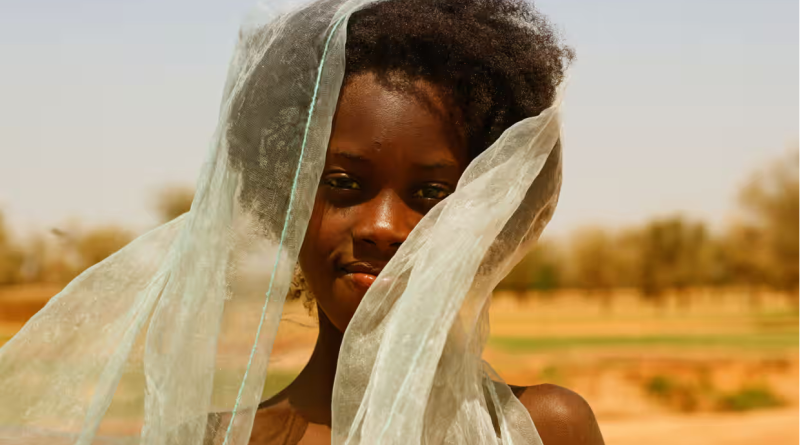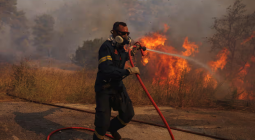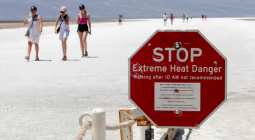Half a billion children live in areas with twice as many very hot days as in 1960s

A girl in Mali, one of the countries worst affected by the rise of extreme heat. Photograph: Feije Riemersma/Alamy
Almost half a billion children are growing up in parts of the world where there are at least twice the number of extremely hot days every year compared with six decades ago, analysis by Unicef has found.
The analysis by the UN’s children’s agency examined for the first time data on changes in children’s exposure to extreme heat over the past 60 years.
As the planet continues to warm, people worldwide are facing more frequent and severe climate threats such as extreme heat and heatwaves. Children are more vulnerable to such hazards.
To assess the speed and scale at which extremely hot days – defined as reaching more than 35C (95F) – are increasing, researchers did a comparison between a 1960s and a 2020-to-2024 temperature average.
They found that 466 million children – about one in five children globally – live in areas that experience at least double the number of extremely hot days each year compared to six decades ago.
They also found that children in west and central Africa have the highest exposure to extremely hot days and this area has had the most significant increases over time.
A total of 123 million children, or 39% of children in the region, experience temperatures above 35C over an average of four months every year, the analysis says.
The figures include 212 days in Mali, 202 days in Niger, 198 days in Senegal, and 195 days in Sudan.
David Knaute, a Unicef regional climate specialist in west and central Africa, said: “This new Unicef analysis issues a stark warning about the speed and scale at which extremely hot days are affecting children. It urgently calls on governments to seize the precious opportunity to act and get temperature rises under control.”
Exposure to extreme heat can lead to heat stress, which poses threats to children’s health. Heat stress has been linked to child malnutrition and non-communicable diseases, and it makes children more vulnerable to infectious diseases such as malaria and dengue fever that spread in high temperatures.
Knaute said children were “uniquely vulnerable” in extreme heat. “Unlike adults, their bodies heat up faster, they sweat less efficiently and they cool down more slowly. When their small bodies are not able to regulate the heat, it leads to heat stress, and they are more likely to suffer from heatstroke or die.”
Last year was the warmest year on record by far, and scientists expect global temperatures to rise further above preindustrial levels, with disastrous results for humanity and the planet.
The Unicef analysis found that children in eight countries, including Mali, Niger, Senegal, Sudan and South Sudan, spend more than half the year in temperatures above 35C. Earlier this year Mali experienced a record heatwave, with temperatures reaching up to 44C.
Knaute said the Sahel, the region south of the Sahara that includes Mali, Niger, Senegal and Sudan, was particularly vulnerable because, as a transitional zone between the arid Sahara and the more fertile belt south of the desert, it creates a natural source of intense heating, and the dust particles from the desert interfere with the climate.
The lack of access to climate-resilient infrastructure, drinking water and appropriate health services worsens the impact of extreme heat on children living there, he said.
Besides physiological effects, extreme heat has other effects on children, including disruption to education.
Shruti Agarwal, a senior adviser on climate change and sustainable economies at Save the Children, said extreme heat was increasingly leading to school closures, affecting academic achievement.
Early this year, South Sudan closed all schools in preparation for a 45C heatwave that was expected to last two weeks. “As the number of hot days increase, we’re going to see children’s learning outcomes being impacted, which in turn then has implications for human capital development,” Agarwal said.
She said there could also be indirect risks to children’s health if extreme heat, for instance, leads to crop failures or food price inflation, thereby causing malnutrition among children.
To minimise the impacts of extreme heat on children, Agarwal said, health and education systems should be equipped to cope, and children should be actively part of planning and implementation.
Unicef recommends that countries deliver climate action that upholds children’s right to a clean, healthy and sustainable environment by reducing emissions and fulfilling climate change agreements.
“There is still hope for the future, but we must act now. Later is too late,” Knaute said.





